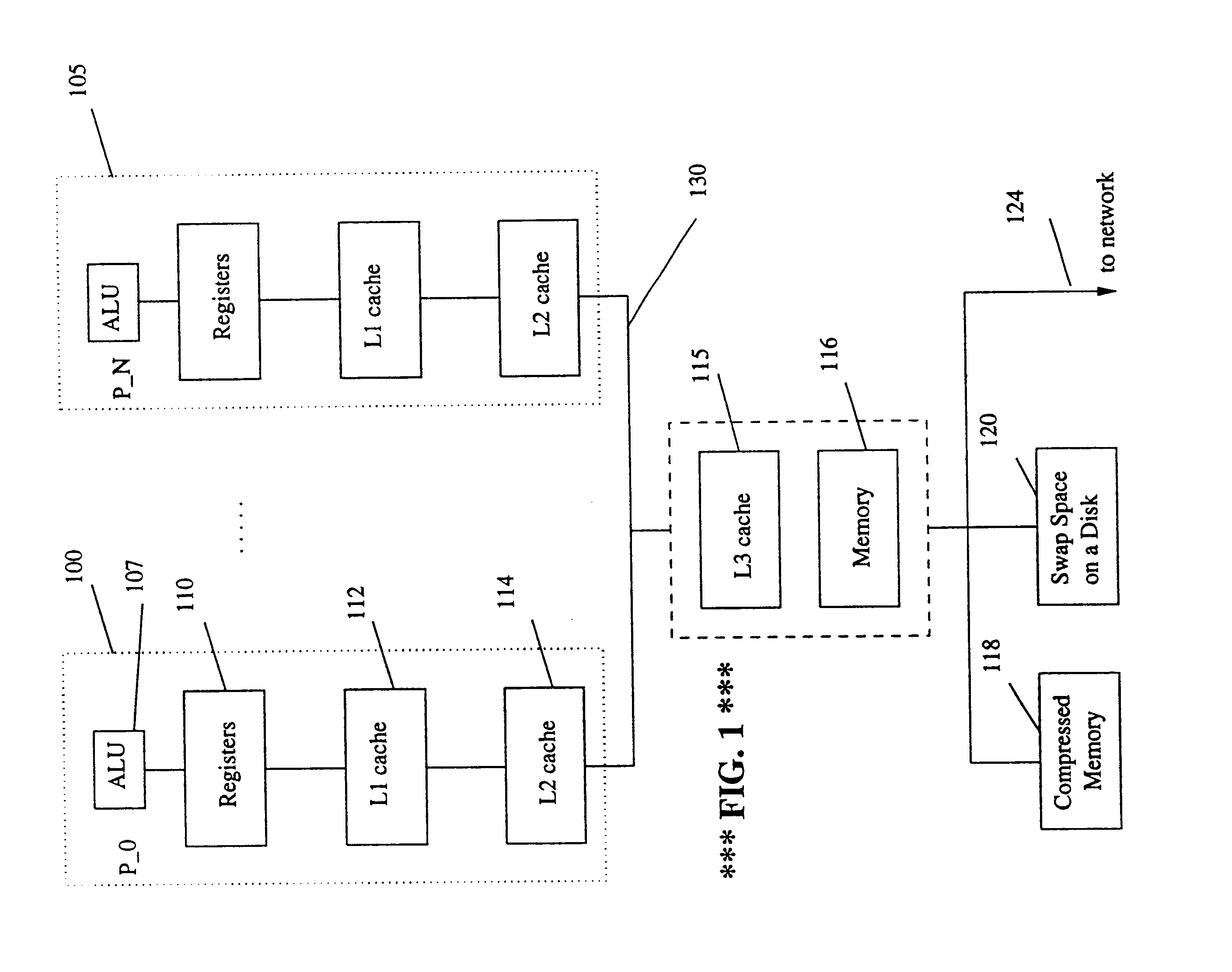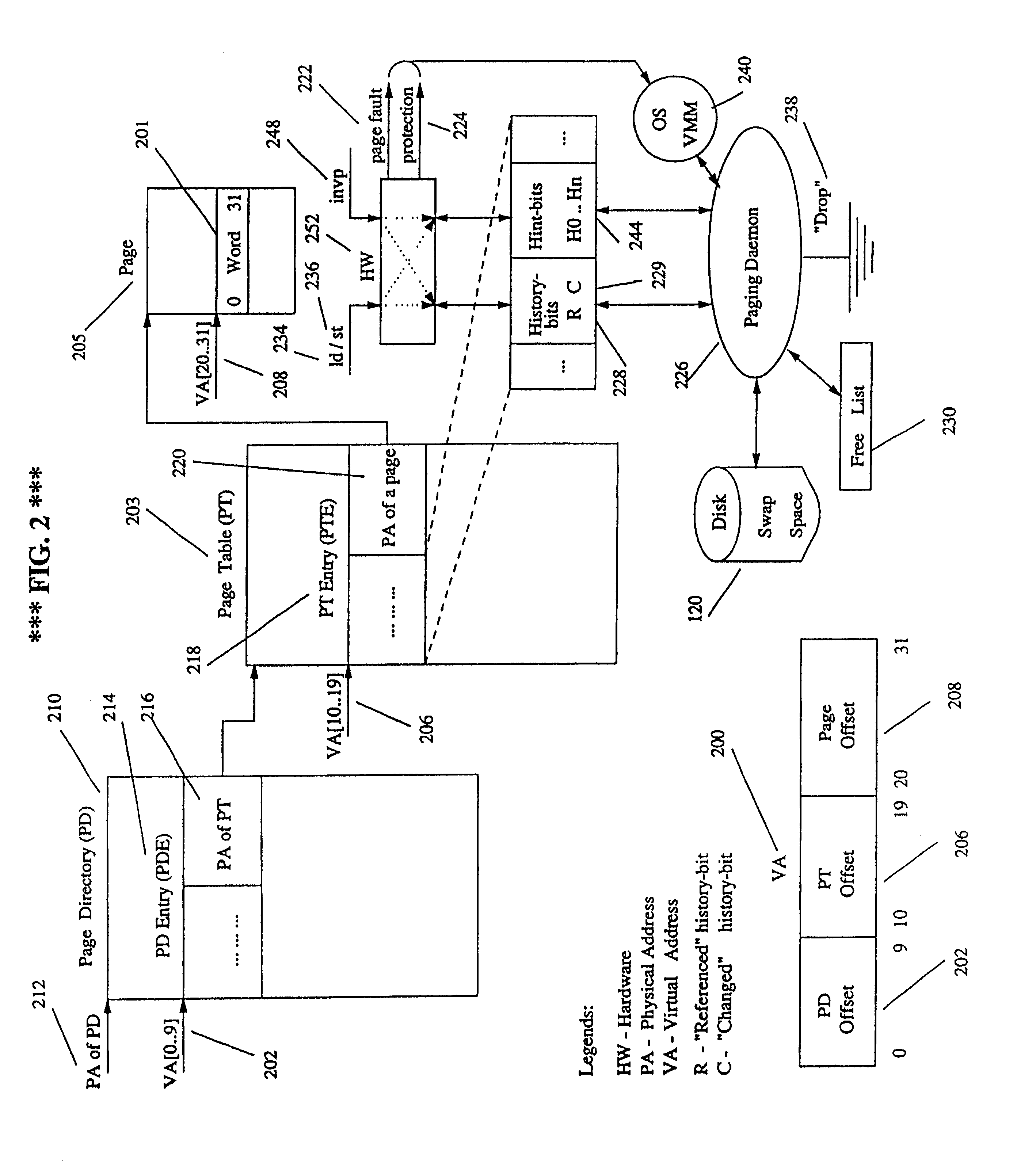Method and apparatus for efficient virtual memory management
a virtual memory and management method technology, applied in memory allocation/allocation/relocation, instruments, computing, etc., can solve problems such as page faults, system failures, and program delays, and achieve the effect of avoiding the transfer of “useless” data and reducing the number of data transfers
- Summary
- Abstract
- Description
- Claims
- Application Information
AI Technical Summary
Benefits of technology
Problems solved by technology
Method used
Image
Examples
Embodiment Construction
[0090]FIG. 1 is a block diagram showing a memory hierarchy in a typical computer system built of a number of processors P_0 . . . P_N (100 . . . 105). In addition to an ALU (107) performing computations, a processor may have a small number of fast registers (110) for keeping temporary data. One (112) or more (114) levels of relatively small caches may be implemented. Caches are used to keep some recently and frequently referenced data. L1 caches constitute the lowest level of memory hierarchy. L2 caches are at the higher level of memory hierarchy. (L3 caches (115) can also be implemented.) Caches of different processors are connected by a bus (130) that is also connected to relatively large L3 cache (115) and / or main memory (116). To create an appearance of large main memory, the OS may choose to keep some memory compressed (118), move some data to swap space on a disk (120), or send it across a network (124) to another system (like the one depicted in FIG. 1) where the data is stor...
PUM
 Login to View More
Login to View More Abstract
Description
Claims
Application Information
 Login to View More
Login to View More - R&D
- Intellectual Property
- Life Sciences
- Materials
- Tech Scout
- Unparalleled Data Quality
- Higher Quality Content
- 60% Fewer Hallucinations
Browse by: Latest US Patents, China's latest patents, Technical Efficacy Thesaurus, Application Domain, Technology Topic, Popular Technical Reports.
© 2025 PatSnap. All rights reserved.Legal|Privacy policy|Modern Slavery Act Transparency Statement|Sitemap|About US| Contact US: help@patsnap.com



